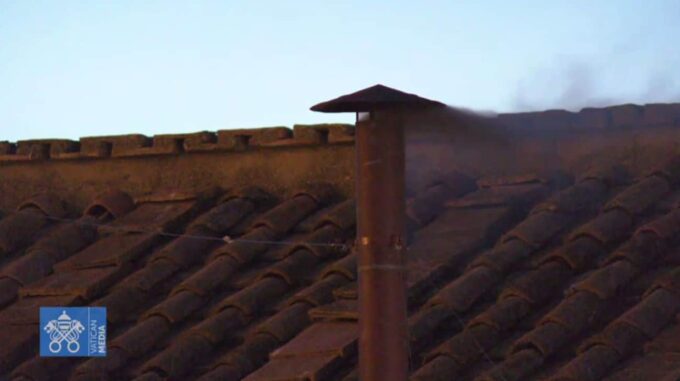In Vatican City, a lengthy process of electing a new Pope has begun: the first day of the conclave ended without a definitive outcome

Traditionally, on Wednesday, Catholic cardinals gathered in the Sistine Chapel to vote, but this time, no candidate received an outright majority. After the first day, black smoke once again billowed from the chapel’s chimney — a classic symbol indicating that the voting process is incomplete and that no qualified candidate has secured the required number of votes. Sources confirm that the Wednesday-organized conclave involved only one round of voting, lasting nearly four hours. Thousands of faithful gathered in St. Peter’s Square to witness the events, anxiously awaiting news from the Vatican. As is customary, black smoke signifies that the cardinals have not yet reached a consensus on the new pontiff. Comments across social media and media outlets have already begun to speculate about next steps: the conclave will convene again, with voting continuing up to four times daily until a successor to Pope Francis is chosen. To formally elect a new Pope, at least two-thirds of the 133 cardinals must support one candidate — that is, at least 89 votes. This ongoing cycle of votes could extend over an indeterminate period, as history shows that the process of choosing a new leader of the Vatican can sometimes last many years; the longest recorded conclaves in the 13th century lasted nearly three years. So far, there are no clear frontrunners, though some names are already circulating among the realm of political and ecclesiastical intrigue. Notably, Italian Cardinal Pietro Parolin, who previously served as the Vatican’s Secretary of State, and Filipino Cardinal Luis Antonio Tagle are considered the most likely contenders. Other potential candidates include Jean-Marc Aveline from France, Hungarian Cardinal Peter Erdő, US Cardinal Robert Prelut, and Italian Piero Bassetti Pizzaballa. These figures are viewed as possible leaders should the voting process prolong further and new candidates need to be brought forward. The dates for the second and subsequent ballots were tentatively set during a closed meeting of cardinals held after the funeral of Pope Francis, who passed away on April 26. This ceremony marked the initial step toward selecting the Church’s new leader. However, the process remains complex and unpredictable: historical precedents show that the election of a new pontiff can take several years—in the 13th century, the longest conclave lasted nearly three years. Analysts emphasize that, considering modern approaches and current political circumstances, the conclave’s proceedings might be prolonged, and a compromise candidate could emerge as the winner. It’s also possible that the process is far from finished, and believers worldwide—including Ukrainians—are advised to await further official updates from the Vatican in the coming weeks. Against this backdrop of an important ecclesiastical event, questions remain about who will ultimately become the new head of the Holy See and how this election might influence both Vatican internal politics and its external relations. Will the cardinals manage to swiftly identify a unifying candidate capable of leading the Catholic Church into a new chapter? Answers to these questions are expected soon. This report, crafted in a journalistic style in Ukrainian and supplemented with notes and details for deeper understanding, aims to provide a comprehensive picture of the current situation and future prospects surrounding the papal conclave.

